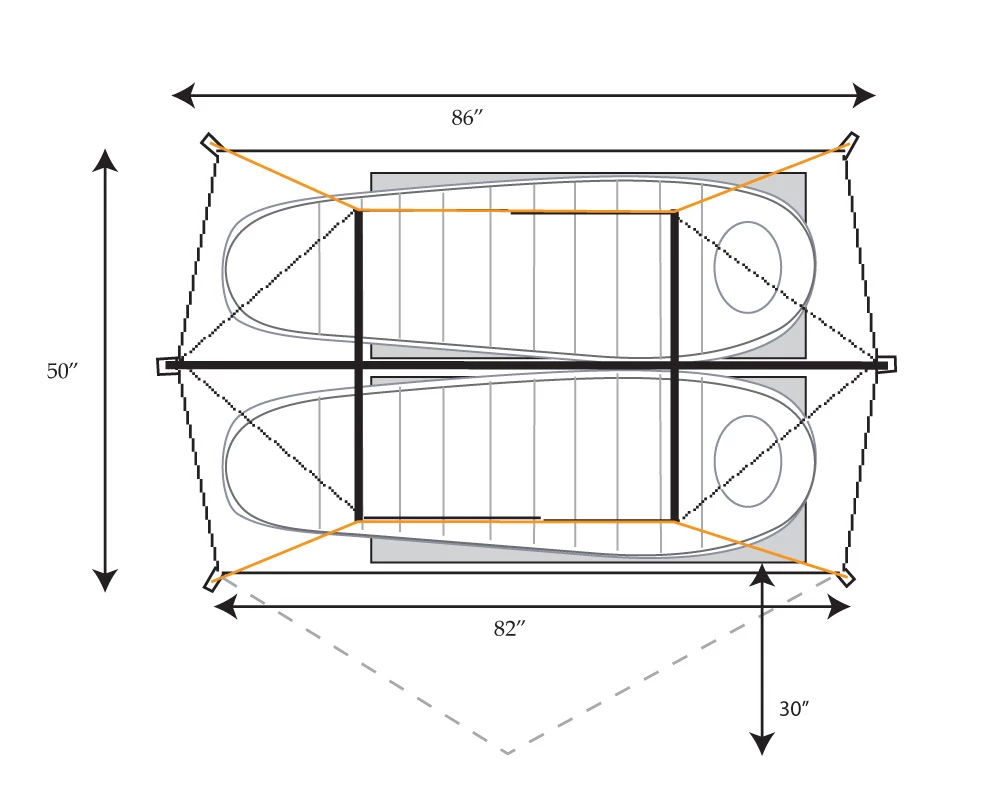Tent poles have to be one of the most hated types of sports equipment in the world. They represent the long, difficult process of setting that huge, overly complex base camp tent up at quarter to midnight. If you're really unlucky, they get twisted and knotted into an unkempt pile or break in the middle of the night. One tent manufacturer has identified an interesting way of eliminating a few of those poles, trading the multi-prong tent pole system for a tent body with integrated elastic cord in a design aimed at saving weight and hassle.
Those that really despise tent poles may be disappointed to find out that Brooks-Range hasn't eliminated them completely from its new Tension Tent line. However, it has lessened the reliance on poles with its internal cord system. Instead of the more elaborate X and Y pole systems common on other tents, the Tension tents use a single, central carbon pole and two small cross poles.

Ordinarily, that pole set-up would leave an awful lot of tent fabric flapping in the wind. On the Tension tent, the two cross poles hold the tensioned broad sides in shape, with help from the corner stake-outs. This design gives the tent a stable structure that Brooks-Range claims can hold up to heavy wind and torrential rain.
Brooks-Range designed the Tension system not so much out of spite for tent poles, but to save weight. The two-person, 30-sq ft (2.7-sq m) Tension 30 has a max weight of 2-lb 11-oz (1.2 kg), while the three-person Tension 40 weighs 3-lb 5-oz (1.5kg).
For comparison, the Easton Kilo 2P, another well-known lightweight tent with carbon fiber poles, weighs that same 2-lb 11-oz (1.22 kg) but has a smaller floor space of 27.5 sq ft (2.55 sq m). The two-person Tarptent Double Rainbow, another single-spine design, weighs 2-lb 9-oz and has a floor space of 30.5 sq ft.
The Tension line is aimed at backpackers, mountaineers and other weight-conscious campers. It launched last month for $420 (30) and $460 (40).
Product page: Brooks-Range









